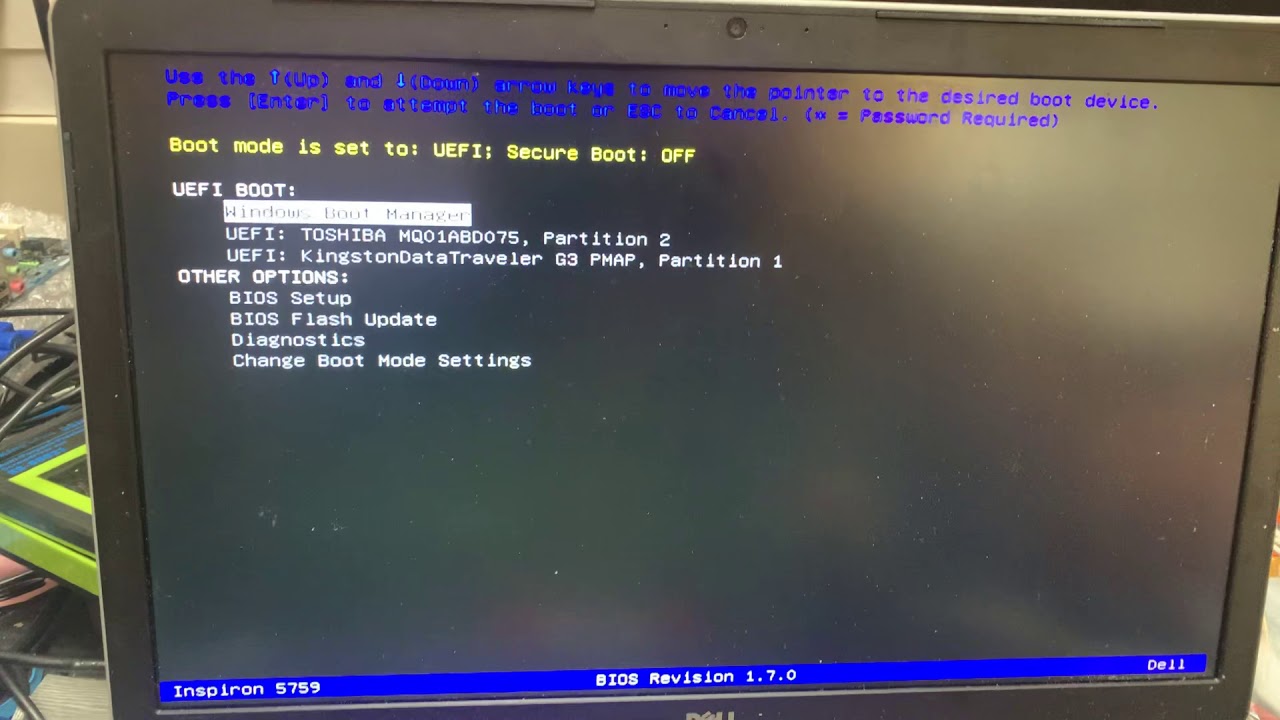To boot Dell from USB, access BIOS settings, prioritize USB boot option, and save changes. This allows your system to boot from the USB drive.
Dell laptops and computers offer the flexibility to boot from a USB drive, enabling users to perform tasks such as installing a new operating system or running diagnostics. By accessing the BIOS settings and setting the USB boot option as the priority, you can easily initiate the boot process from the USB drive.
This straightforward process can be useful in various situations where you need to boot from an external source to troubleshoot or customize your system. Follow these simple steps to seamlessly boot your Dell device from a USB drive and take advantage of its functionality.
Credit: www.dell.com
What Is Booting From Usb?
What is Booting from USB?
Definition Of Booting From Usb
Booting from USB, also known as USB boot, refers to the process of starting a computer from a USB storage device instead of the internal hard drive or solid-state drive.
Advantages Of Booting From Usb
- Portability: Booting from USB allows for the convenience of carrying your operating system and essential files with you.
- Recovery: In the event of system failure, USB boot can be used for recovery and troubleshooting.
- Security: Using a dedicated USB drive for booting can enhance system security by isolating the operating system from the internal storage.
How To Boot From Usb On Dell?
Learn how to easily boot from a USB on your Dell computer with these simple steps. Just follow our guide and you’ll be up and running in no time.
Check Bios Settings
Access BIOS by pressing F2 or F12 during startup. Check if USB boot is enabled in the settings.
Prepare Bootable Usb Drive
Create a bootable USB drive with the necessary files using tools like Rufus or Windows Media Creation Tool.
Change Boot Order
In BIOS settings, locate the boot order options and set USB Storage Device as the first boot priority.
Save And Exit Bios
After changing settings, save changes and exit BIOS to restart the Dell system from the USB drive.
Common Issues And Troubleshooting
When booting Dell from USB, users may encounter common issues that can hinder the process. Here are some troubleshooting steps for resolving these issues:
Usb Not Detected
If your USB drive is not being detected by your Dell system:
- Check if the USB port is functional.
- Try connecting the USB to a different port.
- Ensure the USB drive is properly inserted.
Invalid Bootable Media
When facing invalid bootable media error:
- Verify the USB contains the correct boot files.
- Recreate the bootable USB using a reliable tool.
- Check the USB for any physical damage.
Bios Errors
For BIOS related errors during USB boot:
- Update the BIOS to the latest version.
- Reset BIOS settings to default.
- Ensure the boot order is correctly configured in BIOS.

Credit: m.youtube.com
Tips To Improve Booting From Usb
If you want to improve the process of booting from USB on your Dell device, there are a few key tips to keep in mind that can help streamline the experience and ensure successful booting. By following these recommendations, you can avoid common pitfalls and optimize your system for smooth USB booting.
Use A Reliable Usb Drive
Ensure that you are using a high-quality and reliable USB drive when attempting to boot from it. Cheap or faulty drives can cause errors and may not be recognized by your Dell system.
Ensure Compatibility
Check the compatibility of your USB drive with your Dell device. Some drives may not be compatible with certain models or may require specific formatting to be recognized by the system.
Keep Bios Up To Date
Regularly update your Dell BIOS to ensure that it is compatible with USB booting. Newer BIOS versions often include improvements in USB functionality and compatibility, so staying up to date is crucial for a smooth booting process.
Credit: www.dell.com
Frequently Asked Questions For Dell Boot From Usb
How Do I Force Dell To Boot From Usb?
To force a Dell computer to boot from a USB, follow these steps: Restart the computer and press the F12 key repeatedly until the boot options menu appears. Use the arrow keys to select the “USB Storage Device” option and press Enter.
The computer will then boot from the USB drive.
How To Boot Windows 10 From Usb In Dell?
To boot Windows 10 from a USB in Dell, plug in the USB drive and restart the computer. Press the F12 key when the Dell logo appears. Select the USB storage device from the boot menu and follow the on-screen instructions to boot from the USB.
What Is The Boot Key For Dell Computer?
To access the boot menu on a Dell computer, press the F12 key during startup.
How To Boot From Usb In Bios?
To boot from USB in BIOS, go to BIOS settings, navigate to the Boot tab, select the USB drive as the primary boot device, save changes, and restart your computer.
Conclusion
Booting from a Dell USB drive offers flexibility and convenience. With the guide provided, users can easily configure their systems to boot from USB. This method is particularly useful for installing or repairing operating systems. By following the steps outlined, users can take advantage of this handy feature for their Dell devices.


